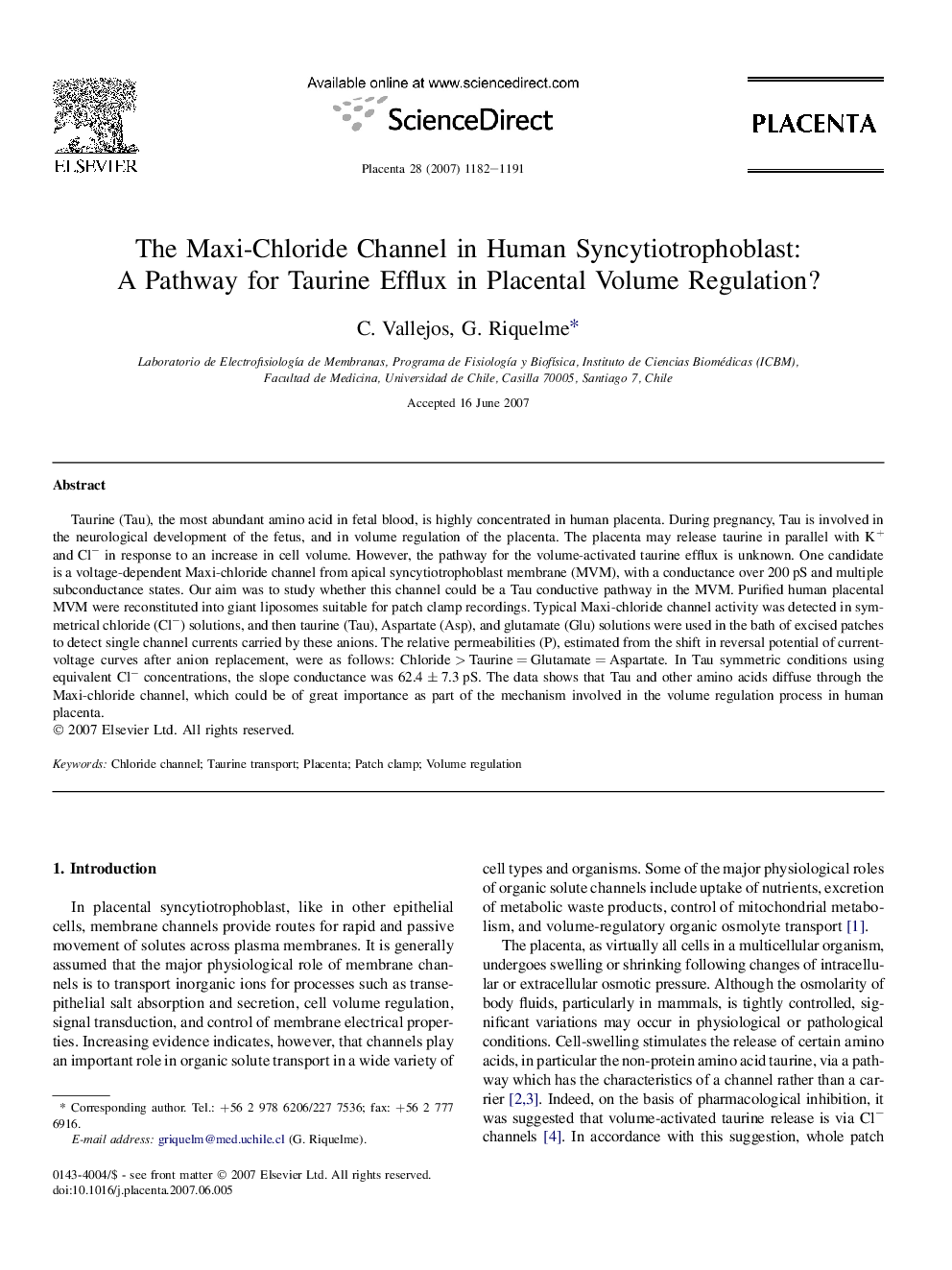| کد مقاله | کد نشریه | سال انتشار | مقاله انگلیسی | نسخه تمام متن |
|---|---|---|---|---|
| 2789616 | 1568573 | 2007 | 10 صفحه PDF | دانلود رایگان |

Taurine (Tau), the most abundant amino acid in fetal blood, is highly concentrated in human placenta. During pregnancy, Tau is involved in the neurological development of the fetus, and in volume regulation of the placenta. The placenta may release taurine in parallel with K+ and Cl− in response to an increase in cell volume. However, the pathway for the volume-activated taurine efflux is unknown. One candidate is a voltage-dependent Maxi-chloride channel from apical syncytiotrophoblast membrane (MVM), with a conductance over 200 pS and multiple subconductance states. Our aim was to study whether this channel could be a Tau conductive pathway in the MVM. Purified human placental MVM were reconstituted into giant liposomes suitable for patch clamp recordings. Typical Maxi-chloride channel activity was detected in symmetrical chloride (Cl−) solutions, and then taurine (Tau), Aspartate (Asp), and glutamate (Glu) solutions were used in the bath of excised patches to detect single channel currents carried by these anions. The relative permeabilities (P), estimated from the shift in reversal potential of current-voltage curves after anion replacement, were as follows: Chloride > Taurine = Glutamate = Aspartate. In Tau symmetric conditions using equivalent Cl− concentrations, the slope conductance was 62.4 ± 7.3 pS. The data shows that Tau and other amino acids diffuse through the Maxi-chloride channel, which could be of great importance as part of the mechanism involved in the volume regulation process in human placenta.
Journal: Placenta - Volume 28, Issues 11–12, November–December 2007, Pages 1182–1191